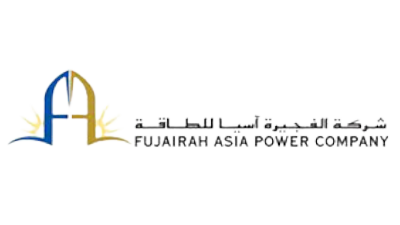Case Study: Physical Verification and Reconciliation of Existing Assets for ADNOC LNG

Client Name: ADNOC LNG, Abu Dhabi UAE
DNOC LNG, a subsidiary of the Abu Dhabi National Oil Company (ADNOC), is a prominent player in the global liquefied natural gas (LNG) market. With a legacy dating back to 1973, ADNOC has been instrumental in shaping the development and growth of the United Arab Emirates’ (UAE) oil and gas industry. Leveraging its expertise and commitment to excellence, ADNOC LNG operates a world-class LNG liquefaction plant in Abu Dhabi, facilitating the transformation of natural gas into high-quality LNG for international markets.
Project: Asset Tagging, Physical Verification and Reconciliation of Existing Assets
Project Objective
ADNOC LNG enlisted the expertise of GST Solutions as a third-party consultant to conduct a comprehensive project aimed at achieving the following key objectives:
- Physical Verification of Assets and Inventory: Conduct an accurate and thorough physical verification of all assets and inventory at ADNOC LNG’s sites. (Both Abu Dhabi Offices and Das Island)
- Reconciliation of Existing Asset Registry: Identify and resolve any discrepancies or inconsistencies in the existing asset registry to ensure accurate and up-to-date records.
Approach and Activity
To accomplish the project objectives, GST Solutions implemented the following approach and activities:
Perform Physical Inventory and Verification at the Sites: GST Solutions’ team conducted on-site physical inventory checks to verify the existence and condition of all assets and inventory items.

- Identify and Recommend Fixed Assets/Inventory for Scrap: Any assets or inventory items deemed obsolete, damaged beyond repair, or no longer economically viable were identified and recommended for proper disposal or scrap.
- Compare Fixed Asset Data to Actual or Physical Assets: The team meticulously compared the data in the asset register with the actual physical assets, identifying any discrepancies that required resolution.
- Prepare Reconciliation of Physical Stock with SAP and Identify Variances: GST Solutions performed a comprehensive reconciliation between the physical stock count results and the data recorded in SAP, highlighting any inconsistencies or variances.
- Asset Tagging with Barcode and Verification: GST Solutions implemented asset tagging using barcode labels, enabling efficient asset identification and verification.


Recommendation
Utilizing FATS (Fixed Asset Tracking Software) for Problem Solution: As part of the project’s deliverables, GST Solutions recommended the adoption of FATS (Fixed Asset Tracking Software) as a comprehensive solution to address the identified challenges.
FATS offer a user-friendly platform that seamlessly integrates with ADNOC LNG’s existing asset management processes, providing the benefits.
Benefits / Deliverables Achieved
The successful completion of the project resulted in the following benefits and deliverables for ADNOC LNG:
Physical Verification Report: ADNOC LNG received a detailed and accurate report of the physical verification, providing a clear overview of the current state of assets and inventory.

- Reconciled Fixed Asset Register: The project delivered an updated and reconciled fixed asset register, ensuring data accuracy and integrity for effective financial reporting and decision-making.
- Updated Procedures for FA Management: GSTSolutions recommended and implemented updated procedures for Fixed Asset (FA) management, streamlining processes and enhancing asset tracking and monitoring efficiency.
Through the partnership with GST Solutions and the implementation of FATS, ADNOC LNG now possesses a reliable and robust system for managing assets, ensuring compliance with regulatory requirements, and optimizing asset utilization, resulting in increased operational effectiveness and cost savings.
Note: Actual images of the Project is Prohibited as per Company Policy

Case Study: Inventory Stock Count and Mismatch Resolution at Fujairah Asia Power Company (FAPCO)

Fujairah Asia Power Company (FAPCO) is a leading power generation company based in the Fujairah region. As part of its ongoing efforts to optimize warehouse operations, FAPCO initiated a comprehensive inventory stock count project. The primary objective was to conduct a physical stock count of over 23,000+ items and identify any discrepancies or mismatches in inventory records. The case study delves into the approach taken, key issues addressed, and the results achieved.
Objectives
The main objectives of the inventory stock count project were as follows
- Conduct a precise and accurate stock count of FAPCO’s warehouse inventory.
- Identify and resolve any discrepancies between physical stock and the inventory records.
- Provide recommendations to enhance inventory management practices and prevent future stock mismatches.
The Approach
To achieve the stated objectives, the following approach was undertaken
- Physical stock count was conducted for various categories of inventory, including Initial Spares, Initial Equipment, Initial Chemicals, Initial RO Supplies, and Initial RO Chemicals.
- The stock count data was meticulously reconciled with their (ERP) system and FAPCO’s books of account to ensure data accuracy and consistency.
- The project team thoroughly examined the purchase price of Initial EPC (Engineering, Procurement, and Construction) stock and cross-verified it with the current cost as per the system to identify and confirm any price variances.
- A rigorous process was employed to identify and separate any stock that was not part of the Initial EPC stock provided by FAPCO.

Key Issues to Solve
The inventory stock count project encountered the following critical issues that needed resolution
- Actual Stocks Not Matching Stock Sheets: Discrepancies were observed between the physical stock count and the recorded stock sheets.
- Unrecorded Stock Availability: Certain items were found to be available in the warehouse but were not accurately recorded in the inventory system.
- Recorded Stock Not Physically Available: Conversely, some items were listed in the inventory system but were not found during the physical stock count.
- Missing Expiry Dates: Expiry dates were absent in some items, which raised concerns about inventory management and quality control.
- Incorrect Stock Locations: Some stock sheets indicated incorrect storage locations, leading to potential operational inefficiencies.
- Zero-Valued Stock Mismatches: Instances were found where physically available stock had zero value in the records and vice versa, impacting accurate financial reporting.
- Inconsistent Warehouse Measurements: Discrepancies in item measurements between the warehouse and inventory register were noted, requiring rectification.
- Expired Chemicals Mixing: The presence of expired chemicals mixed with good items posed a safety and inventory accuracy risk.
Recommendations and Results
Upon thorough analysis and resolution of the identified issues, the project yielded significant results:
- Inventory mismatches and discrepancies were substantially reduced through accurate stock count and reconciliation.
- Recommendations were provided to improve inventory management processes, ensuring better control over stock movements, location tracking, and expiry date monitoring.
- A robust system for verifying and updating stock information was implemented to avoid future inventory discrepancies.
- Warehouse measurements were standardized to ensure consistency between the physical space and inventory records.
- A strict protocol for segregating and safely disposing of expired chemicals was established to mitigate potential hazards.
Using Our Fixed Asset Tracking Software System (FATS)
In conjunction with the inventory stock count project, Fujairah Asia Power Company (FAPCO) can implement our state-of-the-art Fixed Asset Tracking Software System (FATS) to address the identified issues and optimize their asset management processes. FATS offers comprehensive features and functionalities tailored to meet the specific needs of FAPCO’s asset tracking and management requirements.
Here are the recommendations for leveraging FATS as a solution
- Real-Time Asset Tracking: Integrate FATS with the physical stock count process to enable real-time asset tracking. With FATS, FAPCO can effortlessly capture asset data using barcode or RFID scanning, ensuring accurate and up-to-date asset records.
- Automated Reconciliation: FATS provides automated reconciliation capabilities that will streamline the process of comparing physical stock count results with the inventory system. This feature will significantly reduce human error and save time during the reconciliation process.
- Expiry Date Alerts: Configure FATS to send automated alerts for items with approaching expiry dates. This will proactively notify the inventory management team, enabling timely actions such as reordering or proper disposal of expired items.
- Location Mapping: Utilize FATS’ location mapping functionality to accurately record and track the physical storage locations of assets. This will eliminate confusion and errors caused by incorrect stock locations, improving overall warehouse efficiency.
- Enhanced Reporting: FATS offers advanced reporting capabilities, allowing FAPCO to generate customized reports on stock count results, discrepancies, and asset status. These insights will aid in making informed decisions and developing more effective inventory management strategies.
- Mobile Accessibility: Implement FATS’ mobile app to facilitate asset tracking and data entry on-the-go. Warehouse staff can use smartphones or tablets to update asset information in real-time, increasing operational agility and reducing delays.
- Barcode and QR Code Labels: Utilize FATS’ ability to generate barcode and QR code labels for assets. Affixing these labels to items will enhance accuracy during stock counts and enable quick and easy asset identification.
- User Permissions and Audit Trails: Establish user permissions within FATS to ensure data integrity and security. Additionally, FATS’ audit trail feature will allow FAPCO to track changes made to asset records, providing transparency and accountability.
- Integration with exiting (ERP) system: Seamlessly integrate FATS with FAPCO’s existing Maximo system for a cohesive asset management experience. This integration will facilitate data sharing and reduce duplicate efforts in maintaining asset information.
- Training and Support: Provide comprehensive training to FAPCO’s staff on using FATS effectively. Additionally, offer ongoing technical support to address any inquiries or issues that may arise during system implementation and usage.
By adopting FATS as a solution alongside the inventory stock count project, Fujairah Asia Power Company (FAPCO) can revolutionize its asset tracking and management practices. The system’s advanced features, automation, and user-friendly interface will empower FAPCO to maintain accurate asset records, optimize inventory management, and make data-driven decisions for improved operational efficiency and financial transparency.
Therefore, The inventory stock count project undertaken by FAPCO successfully achieved its objectives of improving inventory accuracy and resolving critical stock mismatches. By conducting a comprehensive physical stock count, reconciling data, and implementing strategic recommendations, FAPCO strengthened its inventory management practices, enhancing operational efficiency and financial accuracy.
Note: Actual images of the Project is Prohibited as per Company Policy

